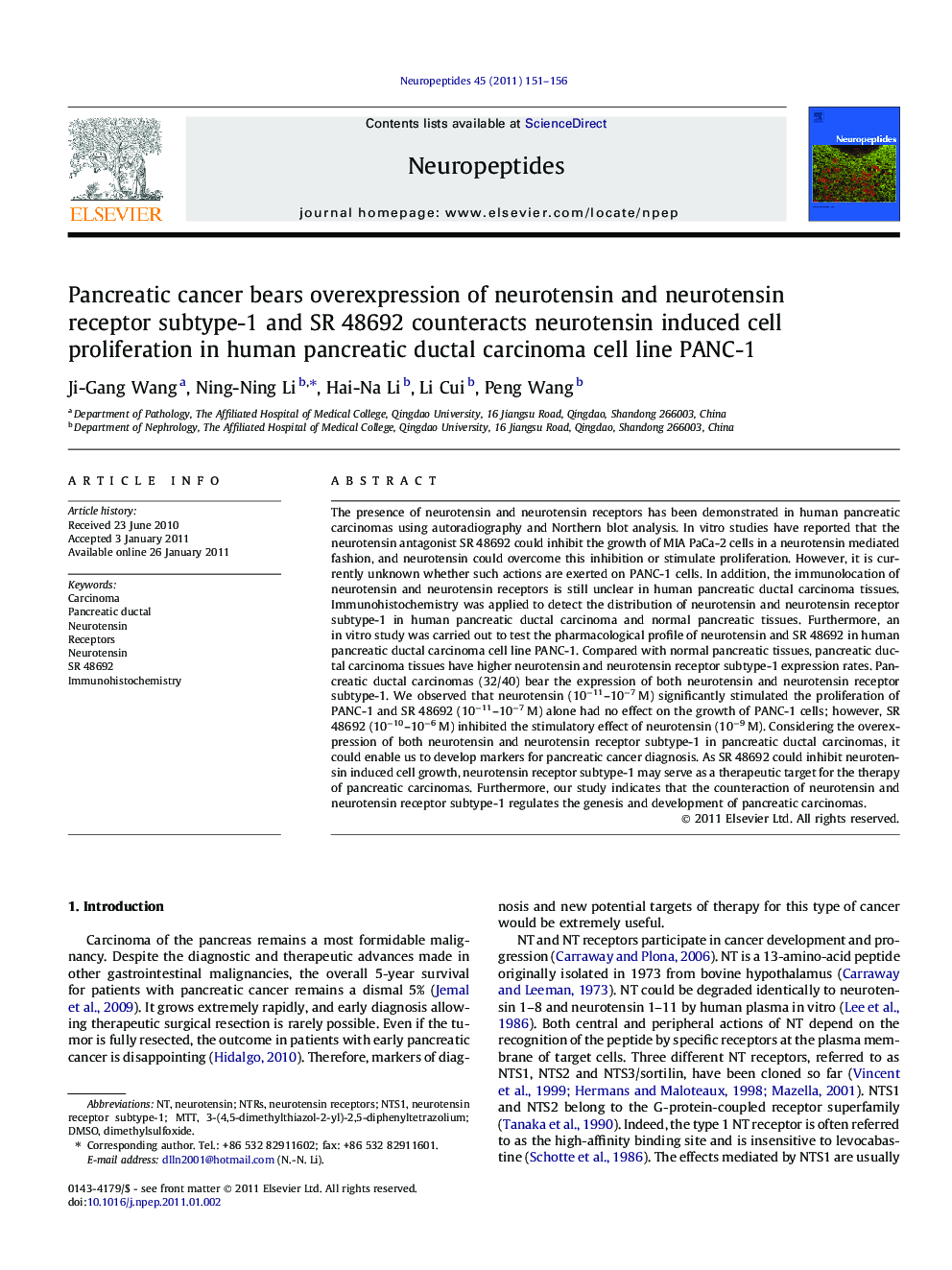| Article ID | Journal | Published Year | Pages | File Type |
|---|---|---|---|---|
| 2808145 | Neuropeptides | 2011 | 6 Pages |
The presence of neurotensin and neurotensin receptors has been demonstrated in human pancreatic carcinomas using autoradiography and Northern blot analysis. In vitro studies have reported that the neurotensin antagonist SR 48692 could inhibit the growth of MIA PaCa-2 cells in a neurotensin mediated fashion, and neurotensin could overcome this inhibition or stimulate proliferation. However, it is currently unknown whether such actions are exerted on PANC-1 cells. In addition, the immunolocation of neurotensin and neurotensin receptors is still unclear in human pancreatic ductal carcinoma tissues. Immunohistochemistry was applied to detect the distribution of neurotensin and neurotensin receptor subtype-1 in human pancreatic ductal carcinoma and normal pancreatic tissues. Furthermore, an in vitro study was carried out to test the pharmacological profile of neurotensin and SR 48692 in human pancreatic ductal carcinoma cell line PANC-1. Compared with normal pancreatic tissues, pancreatic ductal carcinoma tissues have higher neurotensin and neurotensin receptor subtype-1 expression rates. Pancreatic ductal carcinomas (32/40) bear the expression of both neurotensin and neurotensin receptor subtype-1. We observed that neurotensin (10−11–10−7 M) significantly stimulated the proliferation of PANC-1 and SR 48692 (10−11–10−7 M) alone had no effect on the growth of PANC-1 cells; however, SR 48692 (10−10–10−6 M) inhibited the stimulatory effect of neurotensin (10−9 M). Considering the overexpression of both neurotensin and neurotensin receptor subtype-1 in pancreatic ductal carcinomas, it could enable us to develop markers for pancreatic cancer diagnosis. As SR 48692 could inhibit neurotensin induced cell growth, neurotensin receptor subtype-1 may serve as a therapeutic target for the therapy of pancreatic carcinomas. Furthermore, our study indicates that the counteraction of neurotensin and neurotensin receptor subtype-1 regulates the genesis and development of pancreatic carcinomas.
